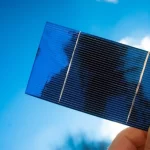SatCo Makes First 5G Call via Satellite Using Everyday Smartphone
A satellite network provider recently achieved a significant milestone by successfully completing a voice and data call from an unmodified smartphone via a 5G connection. The groundbreaking call was made from Maui, Hawaii, to a Vodafone engineer in Madrid, Spain, using AT&T spectrum and AST SpaceMobile’s BlueWalker 3 test satellite. The call took place on September 8th and was conducted using a Samsung Galaxy S22 smartphone.
AST SpaceMobile, which is in the process of building a space-based cellular broadband network, achieved not only this 5G call but also broke its previous data session record by achieving a download speed of 14 Mbps.
The CEO of AST SpaceMobile, Abel Avellan, emphasized the significance of this achievement, highlighting the full compatibility of their satellite network with smartphones from major manufacturers and support for 2G, 4G LTE, and now 5G.
This achievement has garnered attention and praise from industry experts and insiders. AT&T Network President Chris Sambar commended the innovation and collaboration required to make these advancements possible, emphasizing the shared vision of space-based connectivity for consumers, businesses, and first responders worldwide.
However, while this milestone demonstrates the potential of 5G satellite technology, experts point out that its immediate applications may be limited. The appeal of satellite coverage may primarily benefit a small subset of users who frequently find themselves in areas with poor or no network coverage.
While the cost-effectiveness of satellite communication solutions is evident for certain use cases, especially in remote or rural areas, there is uncertainty about whether the average consumer would be willing to pay extra for satellite access on their smartphones regularly.
The ongoing evolution of satellite technology, exemplified by companies like Elon Musk’s Starlink, has the potential to revolutionize wireless communication by significantly increasing capacity and reducing costs. However, challenges remain in managing physical space and frequency usage, particularly as more firms enter the satellite communication business.
Nonetheless, proponents of 5G satellite service see it as the next step in wireless communication, envisioning complete connectivity between various wireless devices and satellites in the future. The potential for bridging the digital divide and providing connectivity in underserved areas remains a driving force behind satellite communication advancements.































